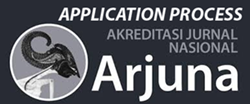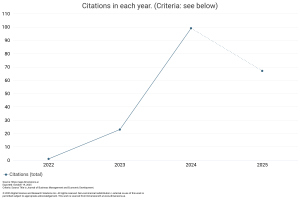Human Resources Strategies: From Job Satisfaction to Innovation in the Age of Technostress
DOI:
https://doi.org/10.59653/jbmed.v2i03.652Keywords:
Technostress, Job Satisfaction, Human Resources, Mental Health, Individual InnovationAbstract
Employee innovation is a crucial aspect of organizations in the current era. Therefore, studying the factors influencing individual innovation is vital and unavoidable. Undoubtedly, job satisfaction is a significant variable in management sciences. Nowadays, all organizations are interconnected with technology. This research explores the relationship between job satisfaction and individual innovation, including its components and the moderating role of technostress. This study, in terms of purpose, is applied, and in terms of data collection method, it is a descriptive survey. Data collection tools included the Technostress Inventory by Tarafdar and colleagues (2007), Janssen's Individual Innovation Questionnaire (2000), and the Job Satisfaction Survey (JSS) by Spector (1994). The validity and reliability of these questionnaires were confirmed. The sample size for this study was 215, and data analysis was performed using SPSS and SMART-PLS software. Job satisfaction has a significant and positive relationship with individual innovation, idea generation, idea promotion, and idea implementation. Technostress moderates the relationship between job satisfaction and individual innovation, idea generation, and idea promotion. However, technostress does not play a moderating role in the relationship between job satisfaction and idea implementation. Conclusion: Based on the results, organizations should take necessary measures to increase job satisfaction and reduce employee technostress.
Downloads
References
Argote, L., & Ingram, P. (2000). Knowledge transfer: A basis for competitive advantage in firms. Organizational behavior and human decision processes, 82(1), 150–169.
Bai, A., Vahedian, M., Bai, M., Ghahreman, R., & Piri, H. (2024). Elevating Women in the Workplace The Dual Influence of Spiritual Intelligence and Ethical Environments on Job Satisfaction. Journal of Business Management and Economic Development, 2(02), 472–490. https://doi.org/10.59653/jbmed.v2i02.599
Basadur, M. (2004). Leading others to think innovatively together: Creative leadership. The leadership quarterly, 15(1), 103-121.
Brod, C. (1984). Technostress: The human cost of the computer revolution. Addison-Wesley, Reading, MA.
Campbell, J. P., Gasser, M. B., & Oswald, F. L. (1996). The substantive nature of job performance variability. Individual differences and behavior in organizations, 258, 299.
Chen, J., Zhu, Z., & Xie, H. Y. (2004). Measuring intellectual capital: a new model and empirical study. Journal of Intellectual capital, 5(1), 195-212.
Drach‐Zahavy, A., Somech, A., Granot, M., & Spitzer, A. (2004). Can we win them all? Benefits and costs of structured and flexible innovation–implementations. Journal of Organizational Behavior, 25(2), 217-234.
Du Plessis, M. (2007). The role of knowledge management in innovation. Journal of knowledge management, 11(4), 20-29.
Elfring, T. (2003). Intrapreneurship: corporate ondernemerschap en venturing. Handboek ondernemers en adviseurs: management en economie van het midden-en kleinbedrijf (Handbook Entrepreneurs and Advisors: Management and Economics of SMEs), Deventer, Kluwer, 147-64.
Fatt, C. K., Khin, E. W. S., & Heng, T. N. (2010). The impact of organizational justice on employee’s job satisfaction: The Malaysian companies perspectives. American Journal of Economics and Business Administration, 2(1), 56-63.
Foss, N. J. (2007). The emerging knowledge governance approach: Challenges and characteristics. Organization, 14(1), 29-52.
Fuller, J. B., Marler, L. E., & Hester, K. (2006). Promoting felt responsibility for constructive change and proactive behavior: Exploring aspects of an elaborated model of work design. Journal of Organizational Behavior: The International Journal of Industrial, Occupational and Organizational Psychology and Behavior, 27(8), 1089-1120.
Gallie, D. (2005). Work pressure in Europe 1996–2001: Trends and determinants. British journal of industrial relations, 43(3), 351-375.
Getz, I., & Robinson, A. G. (2003). Innovate or die: is that a fact?. Creativity and innovation management, 12(3), 130-136.
Griffin, M. L., Hogan, N. L., Lambert, E. G., Tucker-Gail, K. A., & Baker, D. N. (2010). Job involvement, job stress, job satisfaction, and organizational commitment and the burnout of correctional staff. Criminal Justice and behavior, 37(2), 239-255.
Hall, A., & Walton, G. (2004). Information overload within the health care system: a literature review. Health Information & Libraries Journal, 21(2), 102-108.
Hessari, H., & Nategh, T. (2022a). Smartphone addiction can maximize or minimize job performance? Assessing the role of life invasion and techno exhaustion. Asian Journal of Business Ethics, 11(1), 159-182. https://doi.org/10.1007/s13520-022-00145-2
Hessari, H., Daneshmandi, F., & Nategh, T. (2023). Investigating the Effect of Technostress on the Perceived Organizational Commitment by Mediating Role of Individual Innovation. arXiv preprint arXiv:2310.07806.
Hessari, H., & Nategh, T. (2022b). The role of co-worker support for tackling techno stress along with these influences on need for recovery and work motivation. International Journal of Intellectual Property Management, 12(2), 233-259. https://doi.org/10.1504/IJIPM.2022.122301
Hakkak, M., Azadi, M. H., Nawaser, K., Hanifah, H., & Vafaei-Zadeh, A. (2022). The dialectic of failure or hope in organisations: a grounded theory study in a developing country context. International Journal of Management and Decision Making, 21(2), 195-221.
Janssen, O. (2000). Job demands, perceptions of effort‐reward fairness and innovative work behaviour. Journal of Occupational and organizational psychology, 73(3), 287-302.
Kanter, R. M. (2009). In organizations. Knowledge management and organisational design, 10, 93.
Kifle, T., & Hailemariam Desta, I. (2012). Gender differences in domains of job satisfaction: Evidence from doctoral graduates from Australian universities.
Krejcie, R. V., & Morgan, D. W. (1970). Determining sample size for research activities. Educational and psychological measurement, 30(3), 607-610.
Kumar, R., Lal, R., Bansal, Y., & Sharma, S. K. (2013). Technostress in relation to job satisfaction and organisational commitment among IT professionals. International Journal of Scientific and Research Publications, 3(12), 1-3.
Lee, J., Park, S. Y., Baek, I., & Lee, C. S. (2008). The impact of the brand management system on brand performance in B–B and B–C environments. Industrial marketing management, 37(7), 848-855.
Lloréns Montes, F. J., Ruiz Moreno, A., & Miguel Molina Fernández, L. (2004). Assessing the organizational climate and contractual relationship for perceptions of support for innovation. International Journal of manpower, 25(2), 167-180.
Mak, B., Sockel, H., Bucholz, J. A., & Webb, M. W. (2010). Technostress and Organization Loyalty of IS&T% Workers-A Path Model. Journal of Information Processing and Management, 1(2), 4-17.
Miron, E., Erez, M., & Naveh, E. (2004). Do personal characteristics and cultural values that promote innovation, quality, and efficiency compete or complement each other?. Journal of organizational behavior, 25(2), 175-199.
Moore, J. E. (2000). One road to turnover: An examination of work exhaustion in technology professionals. MIS quarterly, 141-168.
Murray, W. C., & Rostis, A. (2007). Who’s running the machine? A theoretical exploration of work stress and burnout of technologically tethered workers. Journal of individual employment rights, 12(3), 249-263.
Mohaghar, A., Ghasemi, R., Toosi, H., & Sheykhizadeh, M. (2022). Evaluating city of knowledge’s project management office functions using BWM and importance‐performance analysis. Journal of Decisions and Operations Research, 7(4), 530-549.
Mohammadi, A., Ahadi, P., Fozooni, A., Farzadi, A., & Ahadi, K. (2023). Analytical evaluation of big data applications in E-commerce: A mixed method approach. Decision Science Letters, 12(2), 457-476.
Nasrollahi, M., Ghadikolaei, A. S., Ghasemi, R., Sheykhizadeh, M., & Abdi, M. (2022). Identification and prioritization of connected vehicle technologies for sustainable development in Iran. Technology in Society, 68, 101829.
Osayawe Ehigie, B., & Clement Akpan, R. (2004). Roles of perceived leadership styles and rewards in the practice of total quality management. Leadership & Organization Development Journal, 25(1), 24-40.
Rosen, L. D., & Weil, M. M. (2000). Results of our 49-month study of business attitudes show clerical/support staff, managers and executives using more technology at work and at home and becoming more hesitant toward new technology. Retrieved February 13, 2004.
Rouhani, S., & Mohammadi, A. (2022). A Novel Hybrid Forecasting Approach for Customers Churn in Banking Industry. Journal of Information & Knowledge Management, 2250089.
Rowley, J., Baregheh, A., & Sambrook, S. (2011). Towards an innovation‐type mapping tool. Management Decision, 49(1), 73-86.
Scott, S. G., & Bruce, R. A. (1994). Determinants of innovative behavior: A path model of individual innovation in the workplace. Academy of management journal, 37(3), 580-607.
Sepahvand, R., Nawaser, K., Azadi, M. H., Vafaei-Zadeh, A., Hanifah, H., & Khodashahri, R. B. (2023). In search of sustainable electronic human resource management in public organisations. Int. J. Information and Decision Sciences, 15(2), 117.
Senge, P. M. (2006). The fifth discipline: The art and practice of the learning organization. Broadway Business.
Sethi, V., Barrier, T., & King, R. C. (1999). An examination of the correlates of burnout in information systems professionals. Information Resources Management Journal (IRMJ), 12(3), 5-13.
Sharma, A., Verma, S., Verma, C., & Malhotra, D. (2010). Stress and burnout as predictors of job satisfaction amongst lawyers. European journal of social sciences, 14(3), 348-359.
Shipton, H. J., West, M. A., Parkes, C. L., Dawson, J. F., & Patterson, M. G. (2006). When promoting positive feelings pays: Aggregate job satisfaction, work design features, and innovation in manufacturing organizations. European journal of work and organizational psychology, 15(4), 404-430.
Spector, P. E. (1994). Job satisfaction survey, JSS. Retrieved March 20, 2002.
Tarafdar, M., Tu, Q., Ragu-Nathan, B. S., & Ragu-Nathan, T. S. (2007). The impact of technostress on role stress and productivity. Journal of management information systems, 24(1), 301-328.
Vieitez, J. C., Carcía, A. D. L. T., & Rodríguez, M. T. V. (2001). Perception of job security in a process of technological change: Its influence on psychological well-being. Behaviour & Information Technology, 20(3), 213-223.
Weil, M. M., & Rosen, L. D. (1997). Technostress: Coping with technology@ work@ home@ play (Vol. 13, p. 240). New York: J. Wiley.
Downloads
Published
How to Cite
Issue
Section
License
Copyright (c) 2024 Ali Bai, Hassan Hessari, Fatemeh Daneshmandi, Tahmineh Nategh

This work is licensed under a Creative Commons Attribution-ShareAlike 4.0 International License.
Authors who publish with this journal agree to the following terms:
- Authors retain copyright and grant the journal right of first publication with the work simultaneously licensed under a Creative Commons Attribution-ShareAlike that allows others to share the work with an acknowledgement of the work's authorship and initial publication in this journal.
- Authors are able to enter into separate, additional contractual arrangements for the non-exclusive distribution of the journal's published version of the work (e.g., post it to an institutional repository or publish it in a book), with an acknowledgement of its initial publication in this journal.
- Authors are permitted and encouraged to post their work online (e.g., in institutional repositories or on their website) prior to and during the submission process, as it can lead to productive exchanges, as well as earlier and greater citation of published work (See The Effect of Open Access).





























